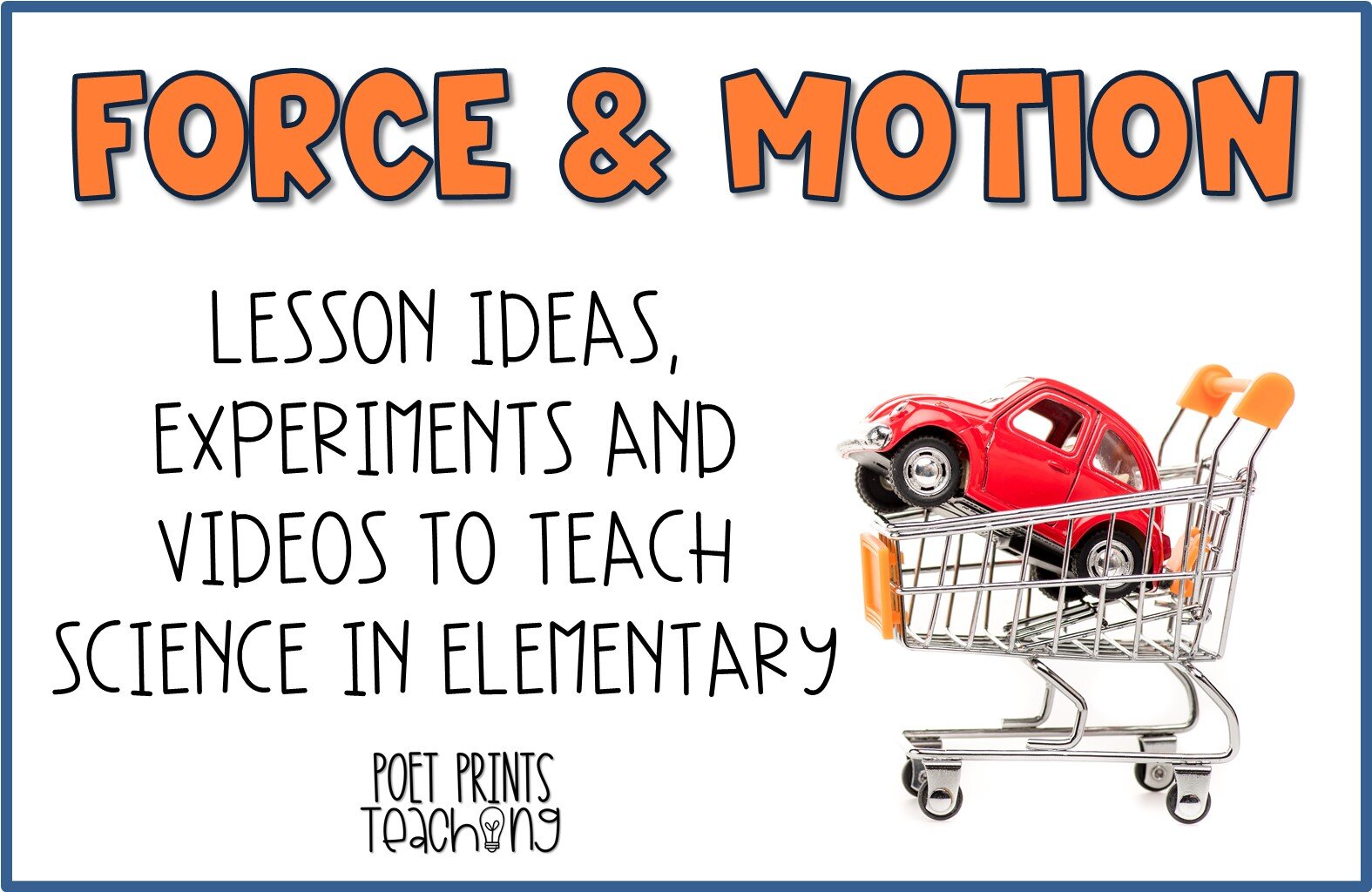Force and Motion Activities For Kids
Teaching about force and motion is one of the most fun parts of our science curriculum! The whole topic naturally lends itself to so many hands-on experiments and challenges that it’s easy to keep kids in second and third grade engaged and having fun. These Science lessons are easily some of my favorite ones we do all year.
When we cover force and motion in elementary (second, third, and fourth grades) we do a little bit of everything: push forces, pull forces, friction, static electricity, magnetic force, air resistance, and more!
The Easy Way to Teach About Force and Motion
Everything you need to teach about forces and motion in 2nd and 3rd grades. Nonfiction reading, STEM Challenges, Experiments, Worksheets and scripted instructions.
Print and teach. It’s really that easy.
Start With Force and Motion Vocabulary
Although I am a big believer in student-led learning, I always start my units with teacher-led information. When I scaffold learning this way (by front-loading the teaching) I'm giving my students a solid foundation for the hands-on experiences that are coming later on. For force and motion, we start with learning all of the basic vocabulary. I'll set up a word wall, and we'll use simple non-fiction readers to help to teach unfamiliar concepts. These force and motion worksheets serve an important purpose in our classroom!
Then, when we start getting into group and student-led lessons, my students are being tripped up when they encounter words like "static electricity" or "magnetic force" or "friction" because they have a basic understanding of most of these already.
Helpful Force and Motion Videos
In the past, I've used videos and youtube clips to help students really understand these physics concepts. If you can access YouTube at school, these were great videos to help introduce new vocabulary with visual aids!
This first video introduces the difference between pull forces and push forces.
This video is all about Friction! We used it before our Friction stations to give students a little more background knowledge before some hands-on exploration. (Plus, the host is really engaging!)
Force and Motion STEM Challenges
The Force and Motion unit includes 3 hands-on stem challenges!
I have always been a big fan of STEM challenges. If you haven't done one before (*insert mind-blown emoji) , this is a GREAT place to start. The open-ended nature of these challenges let students be successful as they guess/test scientific theories at an age-appropriate level.
In our force and motion unit, we do a handful of STEM challenges and the Magnet Maze is probably one of my favorites. It's so creative and my students had the best time gathering materials and creating their magnet mazes. When they're complete, we take the time to test each other's mazes. It's a blast. You can grab the worksheets and teacher lesson plans for this STEM challenge below!
Nonfiction Reading About Forces and Motion
One of the best ways to give students scientific background knowledge is nonfiction reading. I firmly believe in integrating science and reading, it’s a great way to set students up for success. When students can access nonfiction about each science topic (at their level) it can level up the engagement.
Force and Motion reading passages and STEM extension
This is a set of paired passages all about force and motion, and using forces in real life. They’re written to be at a third grade level and are also aligned to the CCSS - so you’re meeting two sets of standards at once! This particular resource also includes a STEM challenge that’s all about catapults - the ultimate force and motion tool
If you JUST need nonfiction reading, I have a set of differentiated passages all about balanced and unbalanced forces. It’s a good place to set the stage and teach students the differences between the two!
Ready to teach the entire Force and Motion unit? I have an entire unit’s worth of lessons, hands-on activities, and experiments that are ready to go! Everything you need to teach all about forces in second and third grade is here and ready. Just print, read, and teach.
Ideas, lessons, and experiments to teach about force and motion in a second or third grade classroom.






